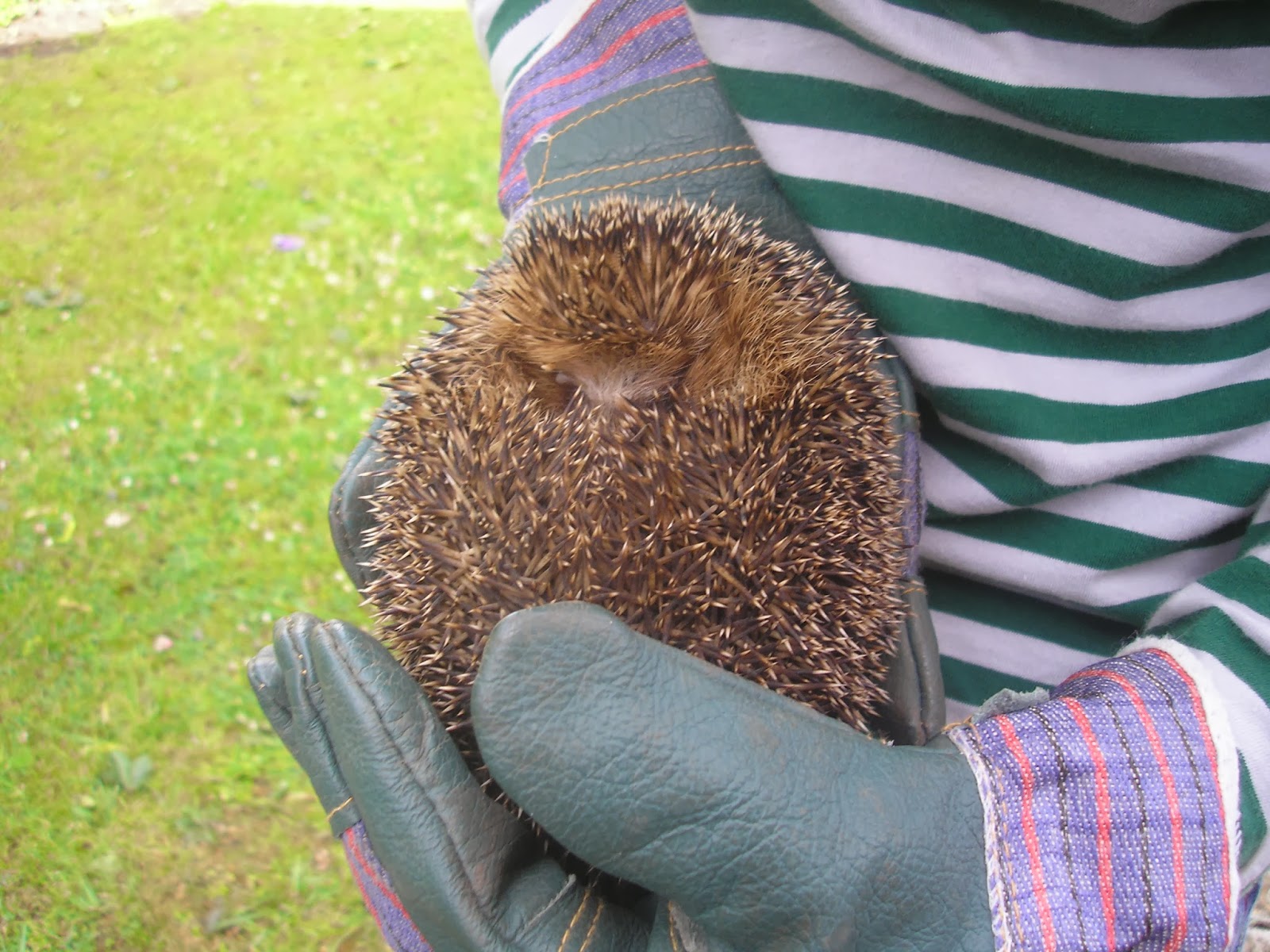I think the first time I ever saw a Hedgehog in the flesh must have been when I was about six years old. It had spent an afternoon wandering around my garden, curling into a ball whenever we approached it before disappearing underneath the neighbours' fence. In hindsight, the fact that the Hedgehog was out during the day means it was probably quite ill, and really we should have taken it to a wildlife hospital. That's a mistake which I'll never make again, having rescued a number of Hedgehogs since setting up my own wildlife ambulance service, Oakley Animal Rescue, back in 2010.
 |
| This Hedgehog, found out during the day, had a tick attached to its right eye |
This was the case with the very first Hedgehog I dealt with; a scrawny animal we affectionately named 'Henry', who was so small he could fit quite neatly into an outstretched hand. After being placed in a box with some straw to nestle under, Henry was rushed off to St. Tiggywinkles Wildlife Hospital where he spent the winter in comfort.
 |
| An underweight hedgehog will need to be fed up in a hospital to stand any chance of surviving the winter |
The 'hog in question was found flat out on a pavement, so severely dehydrated that it was unable to even curl itself into a ball once it had been scooped up off the sizzling floor. Worried that it might not even survive the journey to Tiggywinkles, we quickly wrapped it up in a a wet towel and offered it oral rehydration solution. It soon perked up, and could safely be transported to the hospital for further treatment.
 |
| This heat-stricken hedgehog perked up after being wrapped in a wet towel and given rehydration solution |
Rescuing Hedgehogs has brought me much closer to an animal which I otherwise would probably never see. I strongly urge anyone with a passion for wildlife to help out at their local rescue centre, and make a real difference to the animals on their local patch.
 |
| Always wear gloves when handling Hedgehogs |
1. If you see a Hedgehog out during the day, it needs your help!
Many animals (such as young birds and deer) may appear to be in danger when in actual fact they are not, and taking them to a wildlife hospital unnecessarily can actually be detrimental to their well-being. This is not the case with Hedgehogs, and any found out during the day will almost certainly be sick. So if you do come across one which is ODD, get it to a wildlife rescue centre to be assessed straight away! Even if it turns out to have nothing wrong with it, it is always better to be safe than sorry, and the Hedgehog can always be returned to where it was found once it has been given the all clear.
2. Handle with Care
Hedgehogs don't have those prickly spines for no reason! Always use thick gloves when handling them to avoid hurting you hands.
3. Never release an entangled Hedgehog
Hedgehogs often find themselves entwined in netting, chain links and all manner of rubbish that we leave lying around in our parks and gardens. If the trapped casualty is cut free from a ligature immediately, a condition called pressure necrosis may arise which can kill the injured Hedgehog. So always take the casualty to a rescue centre with any netting, rubbish, etc, still attached!
4. Be wary of diseases
Like many animals, Hedgehogs can harbour a variety of diseases which can be passed to humans through direct contact. These include Salmonella, Leptospirosis (Weil's disease in Humans) and ringworm. To minimise the risk of catching an infectious disease, wear protective clothing (gloves, face masks, etc.), never touch any urine or faeces and always wash your hands after handling an animal.
5. Never underestimate a Hedgehog
Hedgehogs can run deceptively fast over short distances, even when injured. If the 'hog makes it to cover in low vegetation then you may very easily lose it, so be sure to block off all of it's escape routes before you attempt your rescue, and be prepared to throw a towel or jumper over it if it decides to flee.
Happy Rescuing!
Great Blog! Very informative
ReplyDelete